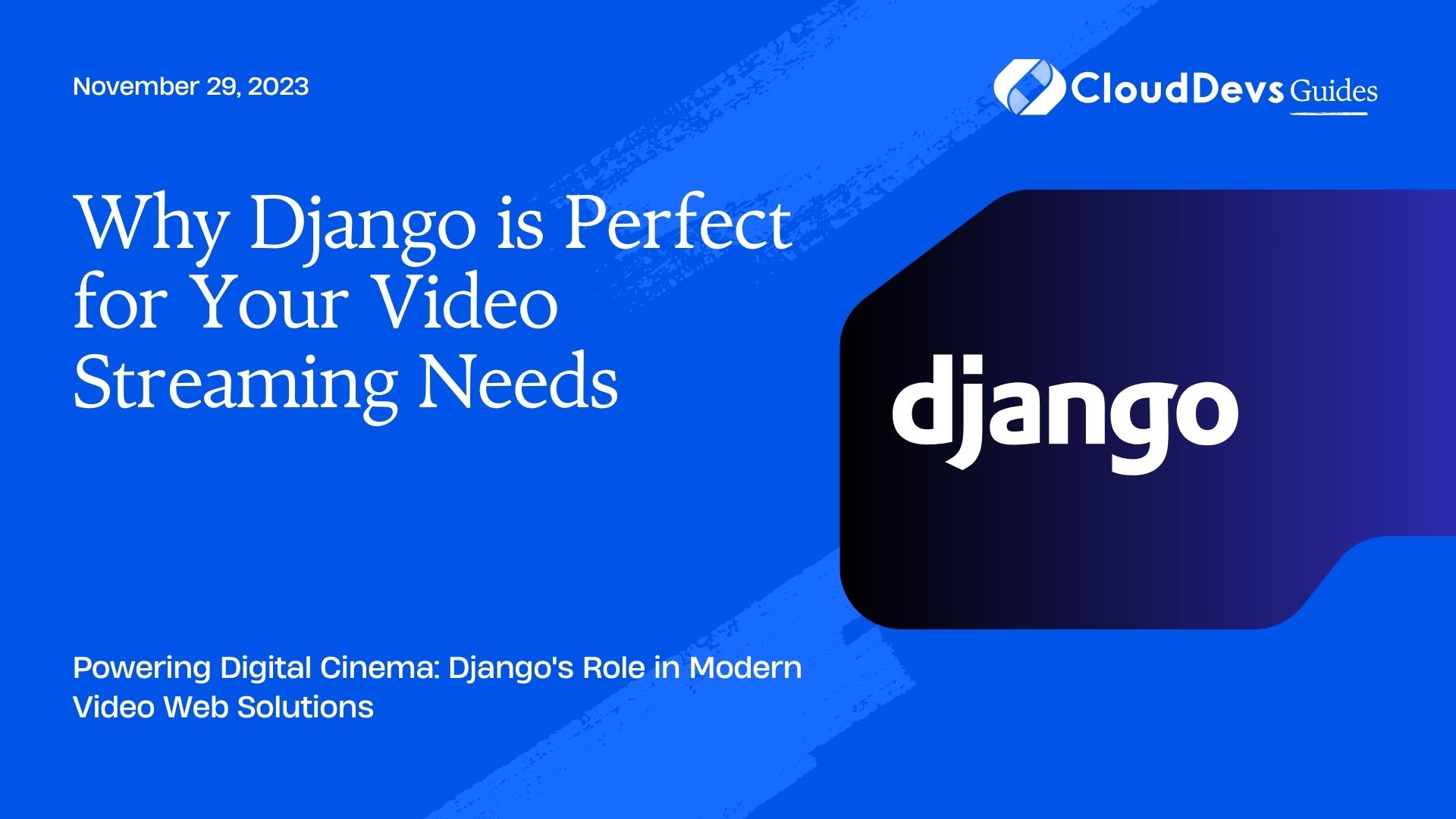Why Django is Perfect for Your Video Streaming Needs
Django, the high-level Python Web framework, is lauded for its simplicity and its ability to streamline web application development. With an increasing number of applications now demanding video-based features, Django developers are often in search of methods to seamlessly integrate video streaming into their projects. In this article, we will delve deep into the nuances of integrating video streaming with Django, complete with examples to guide you.
Table of Contents
1. Why Video Streaming?
Before diving into the ‘how’, it’s essential to understand the ‘why’. With the rapid growth of platforms like YouTube, TikTok, and Zoom, the prominence of video content has skyrocketed. For businesses, the ability to seamlessly integrate videos – whether for product demonstrations, online classes, or user-generated content – can be a game-changer.
2. Fundamentals of Video Streaming
Video streaming is essentially the continuous transmission of video files from a server to a client. Instead of waiting for a complete download, users can start watching a video as it’s being downloaded. The two prominent methods for video streaming are:
– Progressive Download: This method allows users to watch videos as they’re downloaded, but the content remains on their device after playback. It’s suitable for smaller video files.
– Adaptive Streaming: This method adjusts video quality in real-time based on the viewer’s internet speed. It uses techniques like HLS (HTTP Live Streaming) or MPEG-DASH.
3. Getting Started with Django and Video Streaming
Prerequisites:
- Python
- Django installed (`pip install django`)
- Familiarity with Django’s ORM and views
Steps:
- Setting up a new Django Project:
``` django-admin startproject videoproject ```
- Creating a new app for videos:
``` python manage.py startapp videos ```
- Creating a model for videos:
Within `videos/models.py`:
```python
from django.db import models
class Video(models.Model):
title = models.CharField(max_length=255)
video_file = models.FileField(upload_to='videos/')
```
Now run:
``` python manage.py makemigrations python manage.py migrate ```
4. Integrating Video Streaming in Django
Using Django’s built-in support (Progressive Download):
Django has in-built support for serving static and media files, which can be used for progressive download.
In `videos/views.py`:
```python
from django.shortcuts import render
from .models import Video
def video_stream(request):
videos = Video.objects.all()
return render(request, 'videos/video_stream.html', {'videos': videos})
```
In `videos/video_stream.html`:
```html
{% for video in videos %}
<video width="320" height="240" controls>
<source src="{{ video.video_file.url }}" type="video/mp4">
</video>
{% endfor %}
```
Using third-party packages (Adaptive Streaming):
For adaptive streaming, you can use Django packages like `django-hls` or integrate with platforms like AWS Elemental MediaConvert.
For this example, let’s use `django-hls`. First, install it:
``` pip install django-hls ```
Now, modify `videos/models.py`:
```python
from hls.models import VideoFileField
class Video(models.Model):
title = models.CharField(max_length=255)
video_file = VideoFileField(upload_to='videos/hls', format='mp4')
```
Modify `videos/video_stream.html`:
```html
{% for video in videos %}
<video width="320" height="240" controls>
<source src="{{ video.video_file.m3u8_url }}" type="application/vnd.apple.mpegurl">
</video>
{% endfor %}
```
Conclusion
Building video-based web applications with Django is straightforward, thanks to its extensibility and rich ecosystem. Depending on your requirements, you can either use Django’s built-in capabilities for progressive download or opt for third-party solutions for adaptive streaming.
With the growth of video content in the digital landscape, integrating video streaming functionalities is no longer a luxury but a necessity for many web applications. Django, with its vast arsenal of tools and packages, ensures developers can meet this demand efficiently.
Table of Contents







